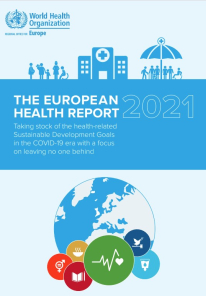Covid-19 reader: 18 March
Covid cases clearly rising across the UK
UK government, Covid-19 dashboard
 Covid-19 cases are now clearly on the rise again across the UK. Cases had been falling fairly consistently until the end of February and early signs of an uptick in reported numbers at the beginning of March have now become a definite trend.
Covid-19 cases are now clearly on the rise again across the UK. Cases had been falling fairly consistently until the end of February and early signs of an uptick in reported numbers at the beginning of March have now become a definite trend.
The seven-day average of reported cases of more than 76,000 in the middle of the week represents a more than 40% increase over the last seven days and is not far off three times the recent low point at the end of February.
The World Health Organization has also reported Covid-19 cases are increasing again globally, after several weeks of declines. ‘These increases are occurring despite reductions in testing in some countries, which means the cases we are seeing are just the tip of the iceberg,’ said director-general Tedros Adhanom Ghebreyesus. He added that continued surges are to be expected, particularly in areas where measures to prevent transmission have been lifted.
The UK clearly comes into the category of countries that are testing less. According to weekly statistics from NHS Test and Trace, the number of tests undertaken – using lateral flow devices and the more robust polymerase chain reaction (PCR) tests – has fallen rapidly since the beginning of the year. Nearly 2.8 million people were tested for Covid at least once in the most recent reporting week, compared with the all-time high of 8.3 million at the beginning of January.
Hospitalisations across the UK are also continuing to increase. Looking at the seven-day average, 300 more patients are being admitted each day according to the latest figures, compared with a week ago. And the most recent figure for Covid patients in hospital is over 14,000 – an increase of more than 3,000 since the beginning of March.
Chris Hopson (pictured), chief executive of NHS Providers, said that trust leaders would be keeping a close eye on the rising admissions. ‘While it is positive that the overall number in hospital remains low compared to previous waves, rising admissions can have knock on effects for patient care,’ he said. ‘For example, separating Covid-19 positive patients to prevent others getting infected does mean fewer beds are available. This can impact upon our ability to provide emergency and planned care.’
The number of Covid patients in hospital remains below January’s Omicron peak in England, Wales and Northern Ireland. But the 2,038 patients in hospital beds in Scotland according to the latest figures is above Scotland’s January Omicron high of 1,571. And it is getting close to its overall pandemic peak occupancy in January 2021, when at one point Scottish hospitals were treating 2,053 Covid patients.
Scottish first minister Nicola Sturgeon this week announced that the mandatory wearing of face masks in public places would be required for another two weeks north of the border. However, other restrictions are coming to an end. People without symptoms will no longer be asked to take twice-weekly lateral flow tests from 18 April as part of a newly published Test and Protect transition plan.
Covid-related staffing absences causing new concern
NHS England and NHS Improvement, winter situation rep
Inevitably, with Covid cases rising in the general population, the NHS is also seeing an increase in Covid-related staff absences. Staff absences in England have increased by more than 20% in the last 10 days, according to winter sit rep figures released at the end of this week.
A seven-day average for the week to 13 March of 17,579 Covid-related absences compares with 14,489 in the week to 3 March – an increase of 21%. These are still a long way short of the nearly 50,000 absences experienced on some days in early January, but the renewed upwards trend is worrying.
There were particularly big percentage rises in the South West (37%) to a seven-day average of 2,288 and the South East (27%) to a latest average of 2,404. The smallest increase was in the Midlands, which saw Covid-related absences rise by just 9% over the 10 days.
Over the seven-days up to 13 March, Covid accounted for nearly a third of all staff absences.
The NHS Confederation’s policy director, Layla MacCay (pictured), said the absences were adding to existing workforce difficulties. ‘These numbers are concerning and reverse the previous falling trend we had been seeing since early January,’ she said. ‘If rates continue to rise, this will put further pressure on the NHS and could undermine its ability to tackle the elective backlog. This will also have knock-on effects in community and primary care settings, where demand far outstrips capacity.’
She pointed out that the increase in Covid-related absences came on top of 110,000 vacancies being carried by the service as a whole. ‘We now urgently need to see a long-term, fully costed workforce plan from government,’ she said.
Population health damaged by Covid
World Health Organization, health report
 The Covid-19 pandemic has hit population health across the continent, according to a new report from the World Health Organization’s European region. Over the nearly two years to the end of 2021, more than 102 million people out of a total population of 929 million were reported to be infected with Covid-19. Around 1.7 million people died as a result. The European health report 2021 also said that a substantial proportion of people who caught the virus suffered from prolonged health problems, including post-Covid or long-term Covid. However, estimating the prevalence of these conditions is challenging.
The Covid-19 pandemic has hit population health across the continent, according to a new report from the World Health Organization’s European region. Over the nearly two years to the end of 2021, more than 102 million people out of a total population of 929 million were reported to be infected with Covid-19. Around 1.7 million people died as a result. The European health report 2021 also said that a substantial proportion of people who caught the virus suffered from prolonged health problems, including post-Covid or long-term Covid. However, estimating the prevalence of these conditions is challenging.
The pandemic and countries’ responses to Covid-19 meant there was widespread disruption to regular service delivery – stretching health and social care systems to their limits. A review across 20 countries up to August 2020 found that healthcare utilisation decreased on average by 37% –
including reductions in visits (42%), diagnostics (31%), therapeutics (30%) and admissions (28%).
Overall, about 8.4 million operations were estimated to be cancelled due to Covid-19 in the World Bank Europe and Central Asia region during the peak 12 weeks of the disruption. Most of the cancelled or postponed operations, roughly 7.3 million, were for ‘benign’ diseases, followed by about one million for cancer and around 100,000 for obstetric surgery. Postponed or cancelled care has not only led to significant losses in healthy life years, but also created backlogs of care and waiting lists.
Mental health and wellbeing were particularly affected. ‘This has resulted in feelings of loneliness, fear and pessimistic perspectives for the future, as well as an increase in symptoms of depression and anxiety among some members of the population,’ the report said. Containment measures included school and university closures, reducing interaction for children and young adults.
The report said that evidence is rising that the pandemic had serious consequences for children’s mental health. And behavioural issues may have worsened in children with pre-existing behavioural problems such as autism and attention deficit hyperactivity disorder.
School closures may also have led to losses of a third to a fifth of a school year, even in countries with a relatively short period of social measures and widespread internet access.
Healthcare workers have also faced increased mental distress because of rising workloads, challenging working conditions and the risk of infection. As well as affecting morale, this has contributed to higher levels of absenteeism, which can lead to even greater stress among the remaining healthcare workers.
The pandemic has also had a profound impact on the mental health and wellbeing of older people. As the group with the highest risk of severe illness and death, the pandemic caused fear, worry and grief among this cohort, while many experienced ‘profound social isolation and loneliness’.
The pandemic and containment measures also influenced health behaviours – with impacts on the patterns of alcohol, tobacco and drug use in significant parts of the population. There has also been an increase in sedentary behaviour and negative changes in nutrition. ‘Emerging evidence points to a significant increase in body mass index,’ the report said.
The report also pointed out that the pandemic had not affected everyone equally. The pandemic had hit vulnerable and at-risk groups harder. These groups include: children; adolescents; women; older people; refugees and migrants; ethnic minorities; marginalised groups; people with long-term conditions or disabilities; those working in insecure jobs or unemployed; and people living in poverty.
Related content
We are excited to bring you a fun packed Eastern Branch Conference in 2025 over three days.
This event is for those that will benefit from an overview of costing in the NHS or those new to costing and will cover why we cost and the processes.